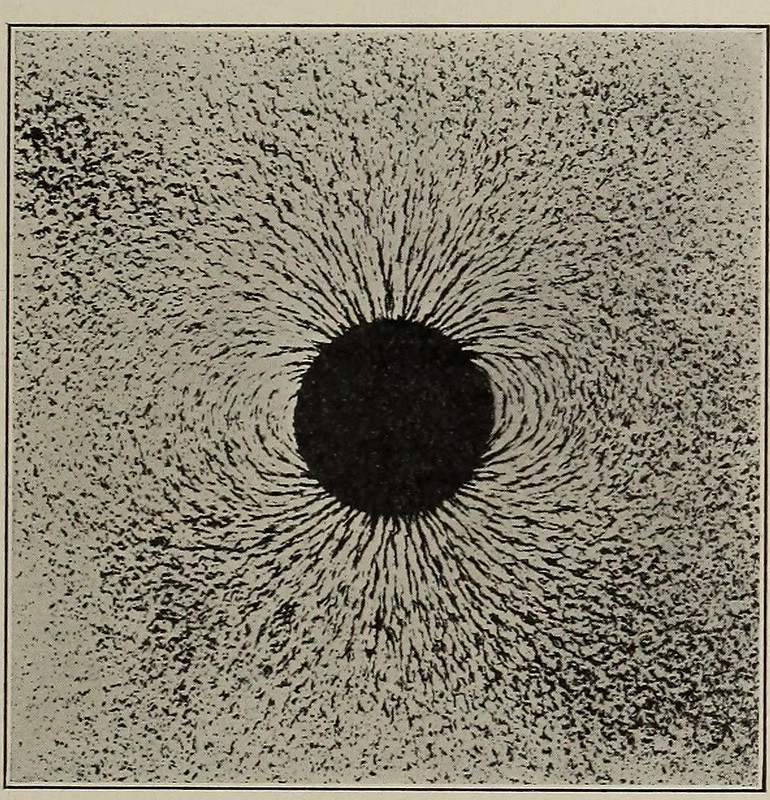TWILIGHT
By:
May 7, 2022

An excerpt from “Twilight (1901),” Chapter XXVI of Henry Adams’s The Education of Henry Adams.
He knew not in what new direction to turn, and sat at his desk, idly pulling threads out of the tangled skein of science, to see whether or why they aligned themselves. The commonest and oldest toy he knew was the child’s magnet, with which he had played since babyhood, the most familiar of puzzles. He covered his desk with magnets, and mapped out their lines of force by compass. Then he read all the books he could find, and tried in vain to makes his lines of force agree with theirs. The books confounded him. He could not credit his own understanding. Here was literally the most concrete fact in nature, next to gravitation which it defied; a force which must have radiated lines of energy without stop, since time began, if not longer, and which might probably go on radiating after the sun should fall into the earth, since no one knew why — or how — or what it radiated — or even whether it radiated at all. Perhaps the earliest known of all natural forces after the solar energies, it seemed to have suggested no idea to any one until some mariner bethought himself that it might serve for a pointer. Another thousand years passed when it taught some other intelligent man to use it as a pump, supply-pipe, sieve, or reservoir for collecting electricity, still without knowing how it worked or what it was. For a historian, the story of Faraday’s experiments and the invention of the dynamo passed belief; it revealed a condition of human ignorance and helplessness before the commonest forces, such as his mind refused to credit. He could not conceive but that some one, somewhere, could tell him all about the magnet, if one could but find the book — although he had been forced to admit the same helplessness in the face of gravitation, phosphorescence, and odors; and he could imagine no reason why society should treat radium as revolutionary in science when every infant, for ages past, had seen the magnet doing what radium did; for surely the kind of radiation mattered nothing compared with the energy that radiated and the matter supplied for radiation. He dared not venture into the complexities of chemistry, or microbes, so long as this child’s toy offered complexities that befogged his mind beyond X-rays, and turned the atom into an endless variety of pumps endlessly pumping an endless variety of ethers. He wanted to ask Mme. Curie to invent a motor attachable to her salt of radium, and pump its forces through it, as Faraday did with a magnet. He figured the human mind itself as another radiating matter through which man had always pumped a subtler fluid.
